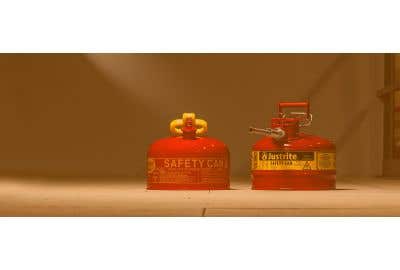*Disclaimer*
The information contained on this page is for promotional and informational purposes only. All equipment should be used by trained professional tradesmen who have been trained how to use the equipment described on this page, and understand the risks of their work. PowerPak assumes no responsibility for errors or omissions in the use or misuse of any product purchased. In no event shall PowerPak be liable for any direct, special, indirect, consequential, or incidental damages or any damages whatsoever, whether in an action of contract, negligence or other torts, arising out of or in connection with the use of this information or the contents of this page. PowerPak reserves the right to make additions, deletions, or modifications to the contents on this page at any time without prior notice.
What’s the opposite of the Golden age? Unprosperous age? Fortuneless age? Chapter 11 age? Well, we are in the Chapter 11 age of safety cans. If you’ve picked up a plastic gas can from the store or gas station in the last decade, you know exactly what I'm talking about. The intention was to create safer and more environmentally friendly gas cans, but they are nearly impossible to use without spilling. Sometimes you can’t get them to pour at all, and when they do work, they take forever to empty. Worst of all, on hot days, they blow up like a balloon because all of the vapors inside can’t escape.
Rant over. We aren’t here to complain all day. We are here to gain a better understanding of all the safety cans options on the market. Yeah, that’s right, the plastic jugs that don’t work are an option, not a requirement.
Stay tuned if you are in the market for a higher quality safety can and need to know more about the different colors, types, styles, and ratings.
What do the different colors mean?
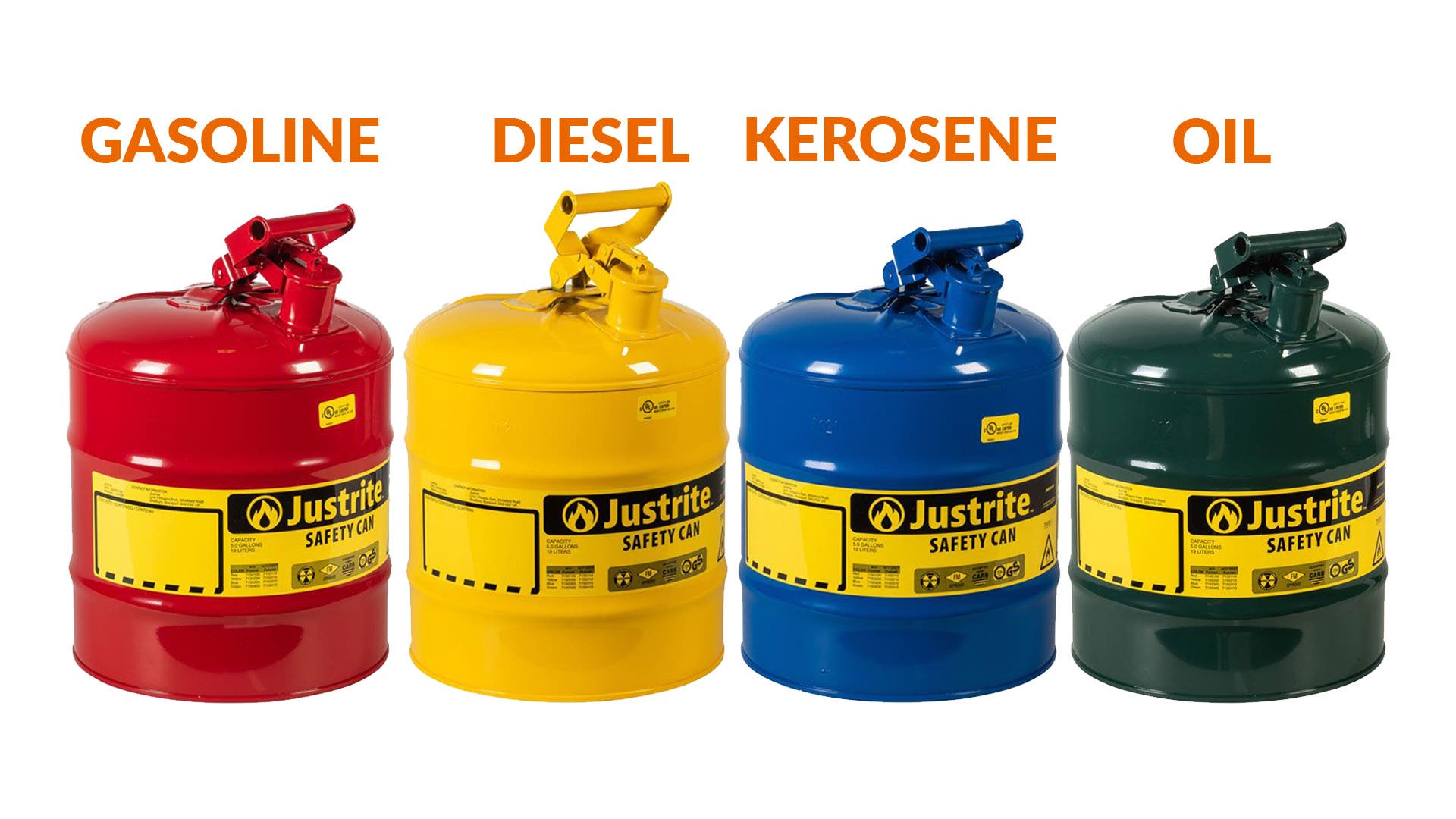

Let's start with the basics here. We’ll be calling them "safety cans" and not "gas cans" because these cans are designed to hold flammable liquids, not just gas. There is a widely recognized color-coded system that helps prevent using the wrong fuel.
- Red – Gasoline
- Yellow – Diesel
- Blue – Kerosene
- Green – Oil
Putting fuel in non-designated containers is against National Fire Protection Association (NFPA) Fire Code. This includes putting fuel in the wrong-colored/labeled container.
Hopefully, it goes without saying, but you can’t use ANY red, yellow, blue, or green containers. At minimum the can needs to have a UL (underwriters’ laboratories) or FM-approved (Factory Mutual Engineering Corp) stamp of approval. So, don’t show up at the gas station and fill up the 5-gallon bucket you spray painted red.
What are the two types of safety cans?
Once you've determined what color safety can you need, next, you'll pick a type. Unlike the color system that applies to all flammable liquid cans, this type identifier only applies to a specific style of metal safety cans (recently, manufacturers began offering a plastic version of this style of safety can). There are only two types; Type I and Type II.
Type I safety cans are simple. They have one opening. You use that opening to fill the can and dispense/pour fuels. There are no other openings or vents, so type I cans can get gulpy if poured too hard. They are intended to pour fuel into vessels with big openings.
Manufacturers have funnel attachments for Type I cans, giving them more accuracy for filling vessels with smaller openings. Some funnel attachments are rigid, while others have bendable hoses.
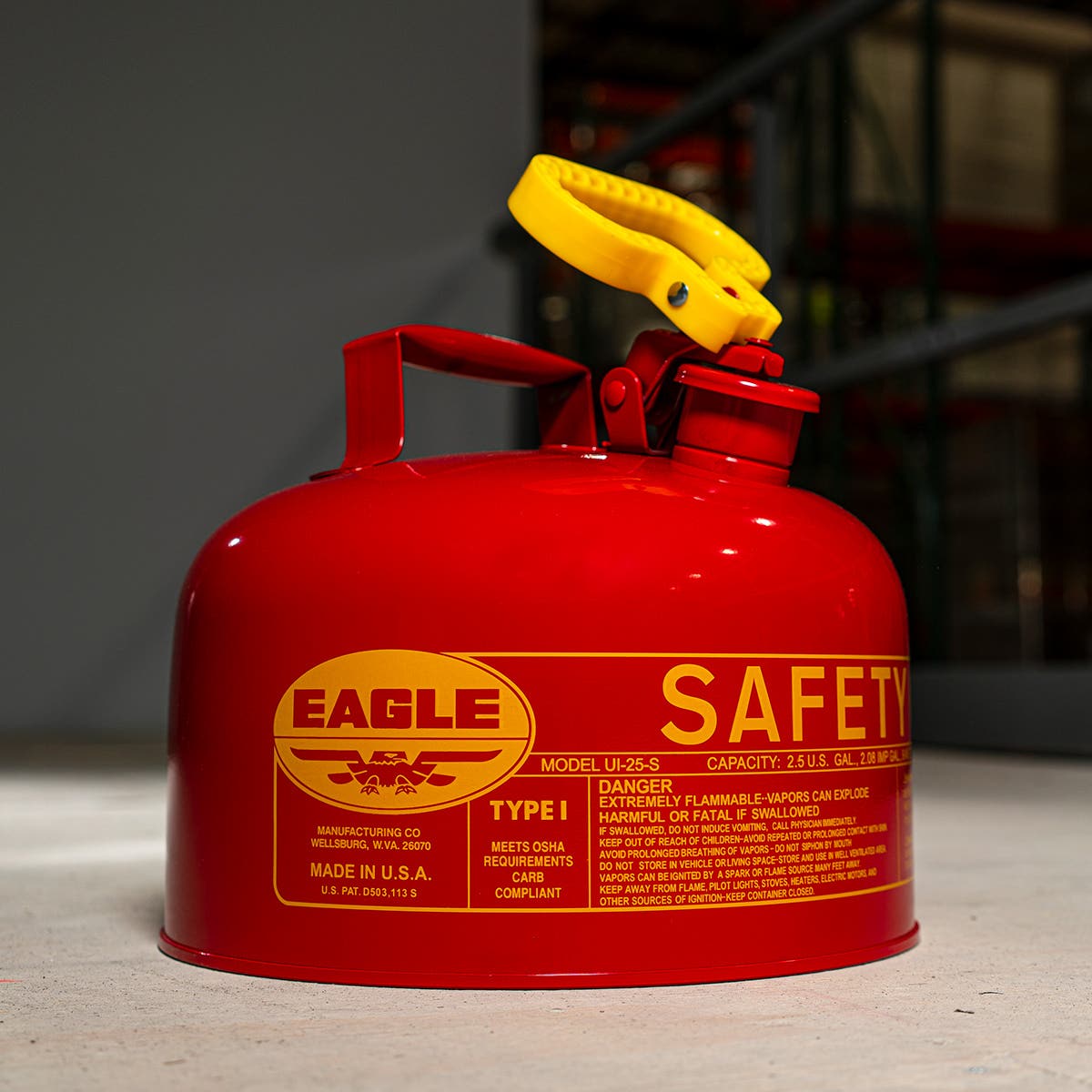

Type II safety cans have two openings. The filling opening is the same as the type I opening, and the dispensing opening is a permanently attached bendable hose. This makes type II cans very easy to use for filling up vessels with small openings, like lawn equipment or cars.
Some manufacturers also have a release trigger that automatically opens the fill spout while pouring, creating a vent, and allowing a smooth pour. The release trigger is also designed to regulate the flow. Unlike with most gas cans where you need to tip the can more or less to get faster or slower flow, type II cans allow you to control that with the trigger. When the vessel is full, you release the trigger, the flow stops and now you can safely remove the hose without spilling any liquid.
The metal hose is also designed to dissipate static electricity when it comes in contact with a surface. The overall safety and convenience of a type II can is hard to beat.
Type I and Type II cans have the same build quality. They are both made of the same material, usually galvanized steel. They have many of the same safety features, including a mesh flame arrester. The flame arrester is a wire mesh inside of the spout, that prevents a flame from spreading inside of the safety can.
Both types have easy-to-use release handles, and positive pressure release caps. These caps are spring loaded. When pressure inside the can builds up beyond 3-5psi, the pressure is strong enough to lift the cap slightly releasing some of the vapors. Once the pressure drops down, the spring will overpower the remaining pressure and reseal the can. Being able to safely vent out excess pressure is one of the reasons these cans last such a long time.
Per regulation, the maximum size of these safety cans is 5 gallons.
Although type II cans are easier to use, they are the more expensive option, sometimes twice the cost of type I with a funnel attachment.
Type I and Type II cans are both widely recognized as safe storage options because they are engineered around the principle that heat, oxygen, and fuel are needed to start a fire, and a well-engineered can needs to always be suppressing at least one of those factors.
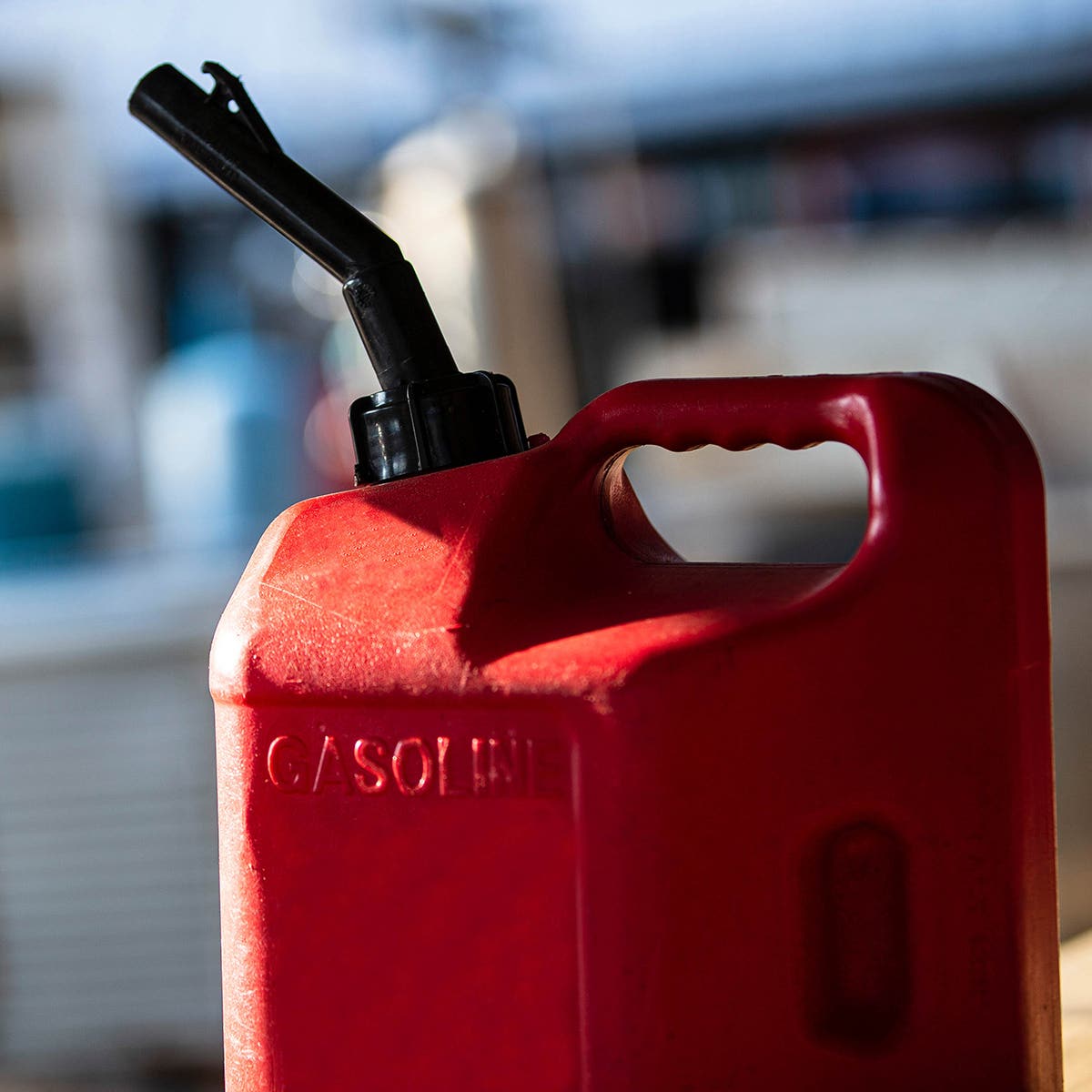

The plastic gas cans you see at the store or gas station are sometimes called EPA-engineered cans or Government engineered cans.
Between 2007 and 2009, the EPA instated new policies to help reduce greenhouse emissions and protect children from being accidentally harmed by flammable liquids. The new policies banned the manufacturing of fuel cans with vent ports and required an auto-closing spout.
Plastic EPA Gas Cans
These two simple policies have created a slurry of issues and complaints. The lack of venting and the closed spout traps vapors inside the can. They often deform and inflate on hot days. On cold days the cans often deform in the opposite direction and become crumpled.
Users also complain about the high-pressure build-up in the can, and when the spout is opened, the pressure releases too rapidly, and fuel erupts out.
The most common complaint is how hard these cans are to use. Manufacturers constantly try and create an easy-to-use spill-proof experience while still being compliant, but it is a challenging task, and few have been able to check all of the boxes.
In addition to the mentioned safety features, auto-closing and no vents, the EPA requires that these cans have a UL or FM-approved stamp of approval. You’ll also often see the CARB (California Air Resource Board) stamp of approval. The EPA and CARB have the same goals when it comes to gas cans.
DOT Cans
At this point, you might be confused about these regulatory bodies and their stamps of approval.
We talked about EPA's plastic cans requiring a UL or FM approval.
Type I and Type II cans also require the same approvals in addition to being OSHA compliant. These cans also usually indicate that they exceed specific NFPA Code 30 requirements.
The US DOT (United States Department of Transportation) has the most stringent requirements. DOT cans are beefed-up type II cans with added safety features. The additional features include large, easy to grab handles and a locking lid. The lid should be locked while transporting and the handles should be big enough that workers with bulky gloves won’t have an issue. These cans still have all of the standard type II safety features like flame arrestor and 5-gallon maximum.
The DOT requires the use of a DOT approved can on commercial vehicles using public roadways.
None of these approvals and certifications are interchangeable and should not be confused. Just because your can has a UL stamp doesn’t mean it’s OSHA compliant or DOT approved.
Jerry Cans
These WWII-era safety cans are an entirely different thing. Jerry cans are popular because their rectangular shape makes it easy to store a lot of them, they are easy to handle, and the design is proven to work.
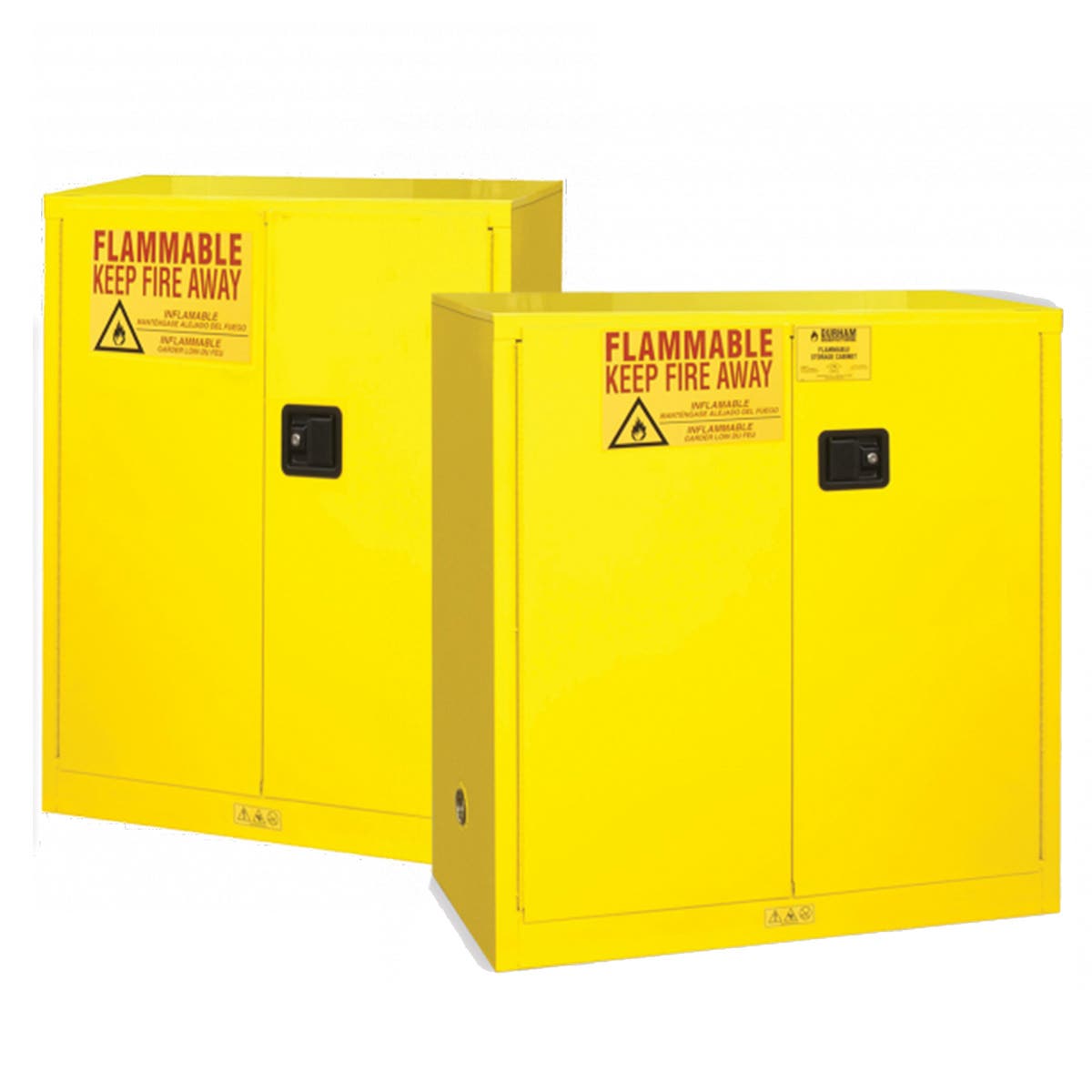

OSHA has a lot of rules and regulations when it comes to storing flammable liquids. A lot of the rules are common sense.
- Flammable liquids need to store in approved containers.
- They should not be stored in front of exits.
- Jobsite storage areas need to be marked with warnings.
You can get Jerry cans with or without spouts, metal or plastic, and with any of the previously listed approvals (except DOT). They hold 5 gallons and are popular in the military and for recreational activities. This is because it is easy to mount or store a Jerry can on the exterior of a vehicle.
Flammable Liquid Storage
There are also many more specific rules regarding the maximum amount of flammable liquids stored in a space before you need a cabinet, specifics about cabinets, and fire safety plans.
There are also many more specific rules regarding the maximum amount of flammable liquids stored in a space before you need a cabinet, specifics about cabinets, and fire safety plans.
Upgrade Today!
Flammable liquid storage and transport safety isn’t an area you should cut corners on. There are countless reports of gas containers exploding in the back of cars, trucks, and while in use. It’s an easily avoidable mistake by using safer cans and safer practices.
Visit our Storage and Material Handling section on the PowerPak website or in our buyer's guide. You’ll find a selection of labels, Type I safety cans, Type II safety cans, funnels, and safety cabinets. Everything you need for your job site-has flammable storage requirements. If you don't see what you need, give us a call, and we will be more than happy to help you out.


